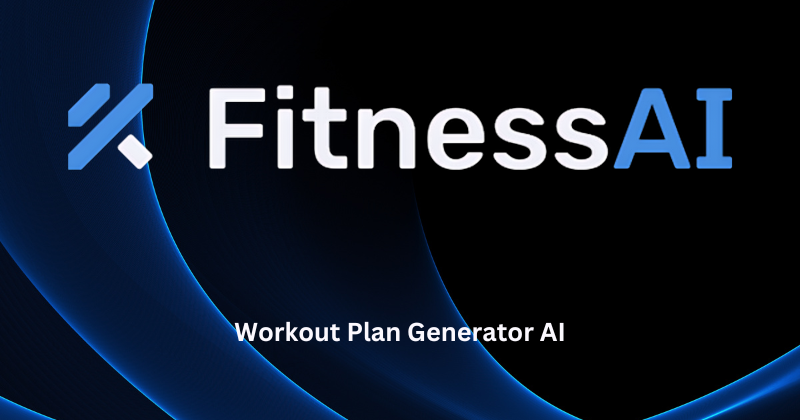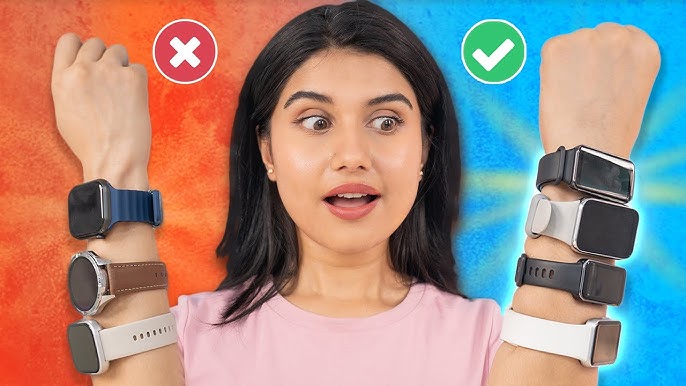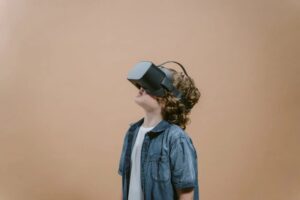The AI Revolution in Fitness: From Passive Tracking to Proactive Coaching
For over a decade, fitness trackers have been a staple on the wrists of health-conscious individuals, diligently counting steps, monitoring heart rates, and estimating calories burned. This first wave of wearables successfully brought data to the masses, but it was largely a passive experience—a digital logbook of our activity. Today, we stand at the inflection point of a profound transformation, driven by the integration of sophisticated Artificial Intelligence. The latest AI Fitness Devices News isn’t just about incremental improvements; it’s about a fundamental paradigm shift. These gadgets are evolving from simple data collectors into intelligent, proactive health companions that offer personalized coaching, predict potential health issues, and seamlessly integrate into our lives. This evolution is a cornerstone of the broader trends seen in Wearables News and Health & BioAI Gadgets News, where the focus has moved from “what” you did to “so what” and “what’s next.” AI is the engine that provides those critical, actionable answers, turning a stream of biometric data into a personalized roadmap for better health and performance.
The Evolution: From Simple Metrics to Holistic Health Intelligence
The journey of fitness technology is a clear narrative of increasing intelligence. Understanding this evolution is key to appreciating the sophisticated capabilities of modern devices and anticipating what the future holds. The progression can be broken down into distinct phases, each building upon the last to create the powerful ecosystem we see today.
Phase 1: The Era of Data Collection
The initial wave of fitness trackers focused on one primary goal: quantification. Devices from pioneers like Fitbit and Jawbone were revolutionary for their ability to passively collect metrics that were previously difficult to track, such as daily steps, distance traveled, and basic sleep duration. They were excellent at answering the question, “How much did I move today?” However, the data was presented with minimal context. Users were left to interpret the raw numbers, and the insights were limited. This phase was crucial for establishing the hardware foundation and consumer interest in self-monitoring, setting the stage for more advanced analysis.
Phase 2: The Dawn of Algorithmic Insights
The next step involved adding a layer of interpretation. Manufacturers began using more complex algorithms to process the raw sensor data and provide richer insights. Instead of just reporting sleep duration, devices started breaking it down into light, deep, and REM stages. Heart rate data was used to estimate VO2 Max or define “fat-burning” zones. This was a significant improvement, providing users with more context. However, these algorithms were generally one-size-fits-all. They applied the same rules and thresholds to every user, failing to account for individual physiological differences. This phase highlighted the need for personalization, a challenge perfectly suited for AI.
Phase 3: The AI-Powered Present
Today, we are firmly in the AI era. Modern devices from companies like Whoop, Oura, and Apple leverage machine learning models to deliver hyper-personalized insights. A key development highlighted in AI Monitoring Devices News is the concept of a “personal baseline.” AI algorithms spend days or weeks learning your unique physiological patterns—your resting heart rate, heart rate variability (HRV), respiratory rate, and body temperature. This baseline becomes the foundation for all subsequent analysis. The device can now detect subtle deviations that might signal impending illness, overtraining, or high stress levels. Instead of a generic sleep score, you get a “Readiness” or “Recovery” score based on how your current metrics compare to *your* established norm. This is the power of AI: transforming generic data points into personalized, predictive, and actionable intelligence, a trend also seen in the latest AI Sleep / Wellness Gadgets News.
Under the Hood: The AI Engines Powering Modern Fitness Tech

The magic of modern fitness devices lies in the sophisticated AI technologies working behind the scenes. These are not simple if-then statements; they are complex systems that learn, adapt, and interpret vast amounts of data collected from an array of advanced sensors. The latest AI Sensors & IoT News continually showcases smaller, more accurate sensors that provide the high-quality data these AI models crave.
Machine Learning for Personalized Baselines and Predictive Alerts
At the core of any modern wearable is a machine learning (ML) model dedicated to understanding you. This process, known as sensor fusion, involves combining data streams from multiple sources—an accelerometer for movement, a photoplethysmography (PPG) sensor for heart rate and blood oxygen, and a temperature sensor. The ML model analyzes these streams in concert to build a holistic picture of your physiological state. Because this processing often happens directly on the device to ensure privacy and speed, it represents a significant trend in AI Edge Devices News. This on-device intelligence allows for real-time feedback and alerts without constant reliance on a cloud connection.
Computer Vision for Real-Time Form Correction
AI’s role in fitness extends far beyond the wrist. The rise of the smart home gym has brought computer vision to the forefront. Systems like Tempo and Tonal, as well as numerous apps featured in AI Phone & Mobile Devices News, use a camera to track your movements during a workout. Sophisticated pose estimation models identify the position of your joints in 3D space and compare your form against a library of correct exercises. If your squat is too shallow or your shoulders are rounding during a deadlift, the AI provides immediate verbal or visual feedback. This technology, a hot topic in AI-enabled Cameras & Vision News, effectively puts a virtual personal trainer in your home, democratizing access to high-quality fitness instruction and reducing the risk of injury. This also serves as a powerful resource for fitness professionals, making it relevant to AI Tools for Creators News.
Natural Language Processing (NLP) for Interactive Coaching
The final piece of the puzzle is communication. Raw data and visual cues are useful, but interactive coaching can be a powerful motivator. This is where Natural Language Processing (NLP) comes in. AI-powered audio coaching, delivered through headphones or smart speakers, can provide encouragement and instruction during a run or workout. This is more than a pre-recorded track; the AI can adjust its feedback based on your real-time performance data. If it detects your heart rate is too high for your target zone, it might advise you to slow down. This transforms devices from passive observers to active partners, a key theme in AI Assistants News and AI Companion Devices News.
The Expanding Ecosystem: AI Health Monitoring in Unexpected Places
While the smartwatch remains the most visible AI fitness device, the technology is rapidly expanding into a diverse ecosystem of interconnected gadgets. This integration is creating a more complete and seamless picture of our health, capturing data from various touchpoints throughout our day.
Smart Hearables and Accessibility
Devices worn in the ear, or “hearables,” are emerging as powerful health monitoring platforms. The ear is an excellent location for measuring core body temperature and provides a stable position for accelerometers to detect motion and, critically, falls. Modern hearing aids and advanced earbuds are now incorporating fitness tracking features. This is a monumental development in AI for Accessibility Devices News, as it integrates essential health monitoring into a device someone is already wearing, reducing stigma and increasing convenience. The audio component, a focus of AI Audio / Speakers News, also allows for discreet delivery of coaching and health alerts.
Smart Clothing and High-Performance Sports

For athletes and individuals in physical rehabilitation, smart clothing offers a level of detail wrist-based trackers cannot match. As highlighted in AI in Fashion / Wearable Tech News, these garments have biometric sensors woven directly into the fabric. They can track muscle activation (EMG), breathing rate and volume, and full-body kinematics. The AI can then analyze this granular data to optimize performance, identify muscle imbalances, and guide recovery, making it a game-changer for topics covered in AI in Sports Gadgets News. We are even seeing research into using drones with AI to track athletes’ movements on a field or slope, a niche but fascinating aspect of Drones & AI News.
The Connected Smart Home and Wellness Environment
The ultimate vision is a fully integrated wellness environment. Your fitness data no longer lives in a silo. Imagine this scenario: your wearable detects a poor night’s sleep. It communicates with your smart coffee maker to brew a slightly stronger cup. Later, based on a stressful day detected via your HRV, the Smart Home AI News becomes a reality as your AI Lighting Gadgets News-featured system adjusts the lights in your home to a calming hue in the evening. Your workout data from a smart mirror could inform your AI Kitchen Gadgets News-linked smart refrigerator to suggest a protein-rich recipe for dinner. This interconnectedness, where Smart Appliances News and wellness tech converge, creates a responsive environment that proactively supports your health goals.
Navigating the AI Fitness Landscape: Promises, Pitfalls, and the Path Forward
The rapid advancement of AI in fitness technology brings with it immense potential, but also significant considerations that users and developers must navigate responsibly. Understanding both sides of the coin is crucial for making informed decisions.
The Promise: Hyper-Personalization and Preventative Health

The greatest benefit of AI fitness devices is the shift from reactive to proactive health management. By learning your individual baseline, these devices can flag potential issues before you even notice symptoms, encouraging you to rest or seek medical advice. The hyper-personalized recommendations for exercise, recovery, and sleep are far more effective than generic advice. This technology can even help manage jet lag for frequent flyers, a topic of interest in AI for Travel Gadgets News, or promote wellness in the workplace, a crossover with AI Office Devices News.
The Pitfalls: Data Privacy and Algorithmic Bias
The detailed biometric data collected by these devices is intensely personal and sensitive. Ensuring its security is paramount. Consumers must be aware of company data policies and demand robust encryption and privacy controls, a critical issue covered by AI Security Gadgets News. Furthermore, algorithmic bias is a real concern. If an AI model is trained primarily on data from one demographic, its accuracy and recommendations may be less reliable for people of different ages, ethnicities, or fitness levels. Developers have a responsibility to train their models on diverse datasets to ensure equity and efficacy.
The Future: Neural Interfaces and Predictive Diagnostics
Looking ahead, the integration of AI will only deepen. We are seeing early-stage developments in AI Research / Prototypes News that point towards an exciting future. The field of Neural Interfaces News suggests a future where brainwave data could be used to measure mental fatigue and cognitive load, adding another layer to performance and wellness optimization. Ultimately, the line between a wellness gadget and a medical device will continue to blur, with future iterations potentially gaining regulatory approval for diagnosing conditions like sleep apnea or atrial fibrillation, truly fulfilling the promise of preventative health.
Conclusion: Your Future Health is Personalized and AI-Driven
The era of the simple step counter is officially over. Artificial intelligence has fundamentally redefined what we can expect from our fitness and wellness devices. They are no longer passive chroniclers of our past activity but active, intelligent partners in our ongoing health journey. By translating raw biometric data into deeply personalized, predictive, and actionable insights, AI is empowering individuals to take unprecedented control over their well-being. The expanding ecosystem, from smartwatches and rings to intelligent clothing and hearables, promises a future where health monitoring is seamlessly and unobtrusively woven into the fabric of our daily lives. While challenges around data privacy and bias must be addressed with vigilance, the trajectory is clear: the future of personal health is intelligent, interconnected, and powered by AI.










